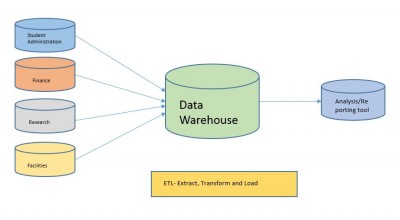 A data warehouse is a subject-oriented, integrated, time-variant and non-volatile collection of data in support of management's decision making process.
A data warehouse is a subject-oriented, integrated, time-variant and non-volatile collection of data in support of management's decision making process.
Subject-Oriented: A data warehouse can be used to analyze a particular subject area. For example, "Student Administration" can be a particular subject.
Integrated: A data warehouse integrates data from multiple data sources. For example, source A and source B may have different ways of identifying a product, but in a data warehouse, there will be only a single way of identifying a product.
Time-Variant: Historical data is kept in a data warehouse. For example, one can retrieve data from 3 months, 6 months, 12 months, or even older data from a data warehouse. This contrasts with a transactions system, where often only the most recent data is kept. For example, a transaction system may hold the most recent address of a customer, where a data warehouse can hold all addresses associated with a customer.
Non-volatile: Once data is in the data warehouse, it will not change. So, historical data in a data warehouse should never be altered.
At UCONN, data warehouse is a copy of transaction data specifically structured for query and analysis. It helps to analyze different aspects of business including, performance analysis, trend, prediction etc. over a given time frame and use the result of our analysis to improve the efficiency of entire Organization. UITS is working on a long term goal of achieving a central Data Warehouse Architecture for all subject areas and to provide full access to entire organizational data without compromising on security.